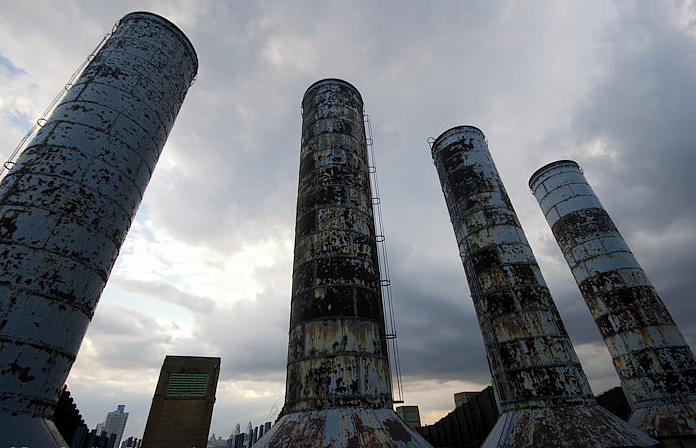Philadelphia’s toxic stew of contaminants devastates young lives

The little girl just wasn’t herself. Her mom, Jacqueline Thomas, knew something was seriously wrong.
“She would stand off by herself. She wouldn’t play with other kids,” Thomas said. “She was throwing up. I’d give her water and she’d just throw it up. I’d give her nuggets and she’d throw up.”
In early June, Thomas rushed her daughter, just shy of 3 years old, to the Children’s Hospital of Philadelphia. Doctors drew the girl’s blood. It tested off the charts for lead. A blood lead level of 29 – nearly six times higher than the level 5 that the Centers for Disease Control and Prevention considers lead poisoned.
The culprit: Lead-saturated paint, flaking and chipping off virtually every surface inside the girl’s home.
City health and building officials have tried to help. They dispatched workers to do a “super clean,” wiping down walls and baseboards, inside the Southwest Philadelphia home that Thomas and her daughter have rented, at $650 a month, for the past four years. Even so, the emergency measure only brought the girl’s blood level down to a 19. Thomas, who works as a home-health aide, has repeatedly tried to reach her landlord to clean up the mess. He disconnected his phone and went AWOL, Thomas said.
Philadelphia is one of the most toxic large cities in America.
Especially for poor children.
In an old and sprawling city like Philadelphia – with an estimated 600,000 homes built before 1950 – the vast majority of disadvantaged children have little refuge from serious health hazards. Their homes, schools and outdoor play spaces are toxic breeding grounds for asthma, lead poisoning and other health-related problems.
They live in dilapidated rowhomes, littered with a poisonous confetti of crumbling lead paint and dust. Each year, more than 1,000 Philadelphia children are newly lead poisoned, city health officials estimate. The damage to a child’s growing brain and nervous system is irreversible. There is no cure. They are condemned to a lead-sick life.
Studies show that no amount of lead is safe. Even at low levels, it can cause children to have lower IQs, attention deficit disorder, anemia, behavioral and learning problems, hyperactivity, slowed growth and hearing problems — conditions that inhibit students from doing well in school.
As for whether the city’s drinking water is even safe, no one can say for certain. The EPA recently singled out the Philadelphia Water Department, faulting the city’s testing methods, which the federal agency said could mask or artificially lower lead levels.
The city’s poorest children are also plagued by respiratory illness, especially asthma. Children living below the poverty line have asthma rates reaching almost 50 percent, according to researchers at the University of Pennsylvania School of Medicine.
Their homes have leaky roofs and corroded pipes that bloom mold. They wheeze from the droppings of rodents and cockroaches. In extreme cases, frustrated families are forced to leave their homes, only to land in worse housing; their children grapple with upheaval and instability.
They attend school in century-old buildings run by a school district without money or the will to reverse years of neglect and create healthy learning spaces. Old lead paint flakes and crumbles off ceilings, walls and staircases, classrooms and cafeterias. Leaks, unchecked, cause water damage and mold growth. Mold creeps throughout the building, coating everything from musical instruments to textbooks.
In addition to the city’s old housing stock, Philadelphia is an industrial-era town in which the industry is long gone. Abandoned or razed factories, where dangerous toxins can be found in soil, are the play spaces of neighborhood children.
Philadelphia is also home to the largest oil refinery on the East Coast. The ancient, sprawling refinery sits on the banks of the city’s Schuylkill River and spews potent carcinogens. On hot, windless days, children suffer with smog-clogged lungs and stinging, watery eyes.
For these children, the odds of success are stacked against them. They already struggle under the unrelenting thumb of violence and poverty. Now add in pervasive illness, which can weigh down generations of children and families. The result is a public crisis without a public outcry. A crisis that saddles taxpayers with billions of dollars in costs for health care and special education services.
Our project, “Toxic City,” will explore the environmental hazards that have harmed generations of poor children. Our reporting for the Philadelphia Media Network will tell the story through families without the money or power to either fix the problems or escape. We’ll examine the root causes and government response to childhood illness.
We’re thrilled that our project has been awarded a 2016 National Fellowship, and we’re looking forward to brainstorming with other fellows in Los Angeles this month.
[Photo by David Scaglione via Flickr.]


